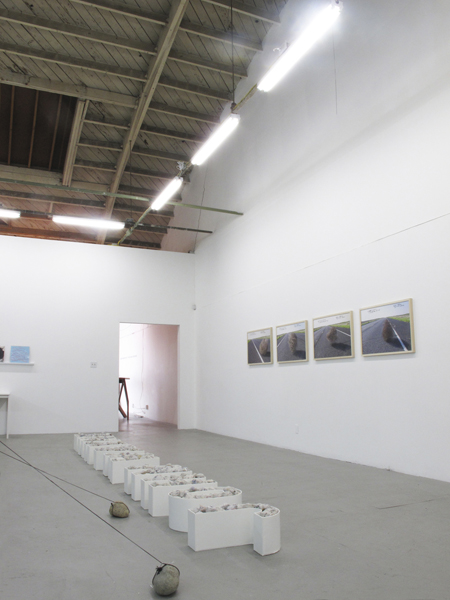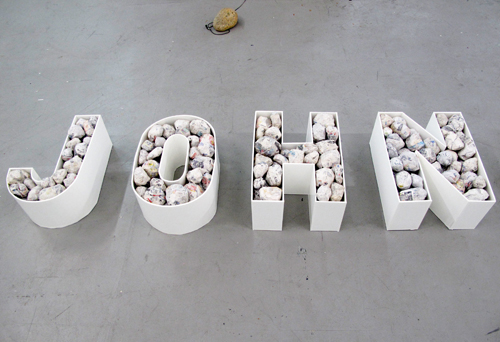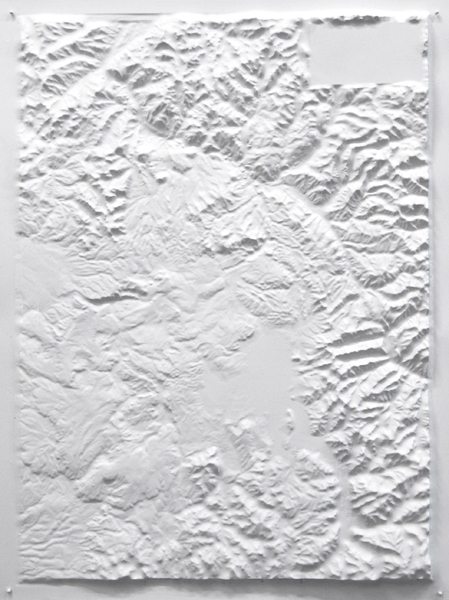‘
Main Gallery Landscape Memories Revisited Group Show

Las Cienegas Projects is proud to present Landscape Memories Revisited, a group exhibition curated by Steven Hull. Based around the notion of the landscape and its multiple interpretations, whether through memories or through pre-constructed images from literature and popular media, the exhibition takes the position that every fragment of the physical world exists only through our memories and experiences of it. Hence, the term “landscape” not only refers to physical settings but may also include people, events, ideas, and concepts subject to memory. These memories in turn become highly personalized landscapes.
The sequel to the 1999 exhibition Landscape Memories, originally hosted at Rosamund Felson Gallery, Landscape Memories Revisited will feature a range of works, diverse in both scale and medium, by an outstanding selection of local and international artists (the majority of whom were in the original exhibition) including Derek Boshier, Tami Demaree, Charles Gaines, Isabell Heimerdinger, Steven Hull, Jonathan Monk, Paul Noble, Stephan Pascher, Terri Phillips and Georgina Starr. A publication will accompany the exhibition, which features works by all the artists and two fictional texts by Tony White and Heidi-Annette Hall.
Project Space Patrick Killoran Immergence
Patrick Killoran, Immergence, 2009. Modified vending machine, doorway and temporary wall
In Immergence, Patrick Killoran’s installation for Las Cienegas Projects, a Coke machine is altered to serve as the new entrance and exit to the gallery’s exhibition spaces. Killoran has rebuilt the threshold of the gallery in an aggressive manipulation of the exhibition experience. Upon passing through the new doorway, visitors actually emerge from inside the machine, finding themselves, in this surprising moment, to be implicated in the artwork’s deceptive representation.
Central to Killoran’s strategy is the artwork that pretends to be something it is not, often times transitioning the viewer from unwitting observer to analyst. Immergence provides the participant with another such opportunity. According to Killoran, the vending machine’s capacity both to merge and define one’s surroundings is a quiet, systematic domination, and its association with an omnipresent corporate image is not a coincidence.
Located, both conceptually and spatially, at the threshold between the gallery and the outside, Immergence also makes its experience a non-negotiable access to the space: once inside the exhibition, the Coke machine is the only way out. And while humorous, the situation is unyielding and unavoidable, subverting the freedom to ignore, part of the basic contract between viewer and artwork. Similarly, our supposed freedom to disregard corporate imagery is questioned, underscoring our consistent bombardment with opportunities for consumption. Even if we avoid purchasing these products, their constant visual and cultural influence cannot be dismissed; they define our landscape and manipulate our appetites.
Back Room
Derek Boshier
Dark Web

Derek Boshier, The Urbanist, 2009. Acrylic on canvas, 72 x 60 inches
“Of all the British artists who emerged with the Pop Art movement of the 1960s, Derek Boshier has been perhaps the most continually inventive. Rather than settling into a signature style he has been constantly experimental, with the result that all the different Boshiers can hardly be discussed simultaneously: the pop artist, the minimal sculptor, the conceptual artist, film-maker, photographer, graphic designer, draftsman and painter. This diversity may be partly due to personal curiosity and intellectual restlessness… but it must also be because, of all the British artists of the second half of the 20th century, Boshier has been one of the most closely attuned and critically attentive in his work to cultural and political changes.
The fact that Boshier has lived and worked for long periods abroad, chiefly in Texas and Los Angeles, has also affected his visibility. There is no milieu that easily knows his work in its entirety.”
–Guy Brett, British art critic and writer, August 2009


















Keep me on your list as its fun to see what you are up do with the gallery.
Pingback: “Vehicle for idiomatic communication” « Piece of Paper Press
Pingback: Notes on Looking » Blog Archive » NoL Nov 17, 2009